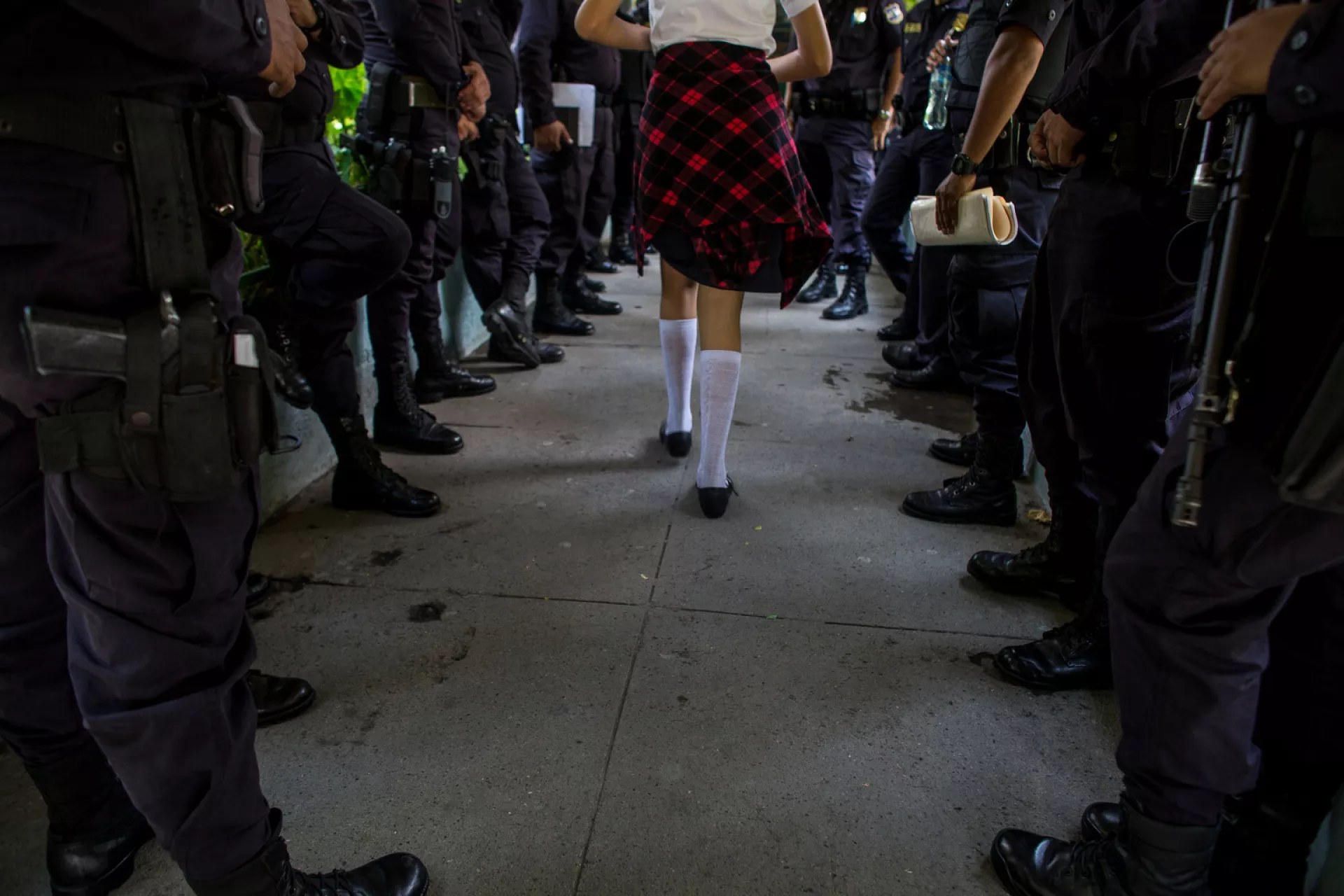In El Salvador, a teenager worries about raising her child in a climate of violence
“I believe that violence is learned.”

- Available in:
- English
- Español
Sixteen-year-old Patricia will soon give birth to a daughter. Along with the normal anxieties that accompany new parenthood, she must also deal with living in a community that has high rates of violence. Learn how UNICEF is working with her community to create safe spaces for peaceful dialogue.
SAN MARTIN, San Salvador, El Salvador, 4 May 2017 – Every word spoken by Patricia is preceded by the smile of a playful girl who is not old enough to take life seriously. But in three short months, she will assume the responsibilities of motherhood.
Still, she is optimistic: “It gets me excited because I want to teach her what I was not taught, and give her the love I was not given, and give her the trust I did not have.”
The news about the pregnancy angered Patricia’s grandmother. Three years ago, Patricia and her two sisters came under their grandmother’s care when their mother migrated to the United States. Now, a freshman student and just 16 years old, Patricia is pregnant by a 22-year-old man.

A 15-year-old girl receives prenatal care at the Health Unit of San Martin Municipality, one of the most violent areas in San Salvador, El Salvador. According to a 2015 study by the UN population fund, 30 per cent of all pregnancies in the country are from girls and adolescents aged 10 to 19 years.
When her grandmother rejected her, Patricia called her mother in California to tell her that she was pregnant. “My mom got sad, then angry, and after that, she started to give me advice about how to take care of my baby.”
Patricia is worried for her baby growing up in San Martín, a municipality in El Salvador well known for its high rates of violence and high population density.
She says that in her community, very young children start reproducing the violence they observe at home and in the environment. “From a very early age, children run to their houses when they see the police coming and they take out their gun toys because they say they’re going to kill them.”
“I believe that violence is learned,” Patricia says. She talks about the case of a child who grew up seeing his father beat his mother. “That is why when he played, he wanted to beat up the girls because his dad had told him it was alright.”
Now that she is going to be a mother, she has been thinking about migrating to be with her mother. “If I left [for the United States] my daughter would have a different future because this country is very hard for children. You don’t have the freedom to go everywhere you want…we lost that freedom, you cannot do that anymore”.

A 15-year-old girl receives prenatal care at the Health Unit of San Martin Municipality. UNICEF supports municipalities through communication for development (C4D) actions to prevent violence against children and adolescents.
In a municipality like San Martín, divided by the borders established by gangs, Patricia appreciates that UNICEF is opening spaces for dialogue and reflection about the conditions surrounding personal and community life in a context of violence.
“Sometimes you want to learn more, and to be heard, which is not possible in my community,” she says.
Guenay Salazar is a UNICEF consultant specialized in creating communication for development strategies in environments of violence. For her, defining an effective message and finding the best way to spread it would not be possible without a wide citizen consultation in the municipalities most affected by violence.
“The strategies that resonate are the ones created with the people based on their needs and interests,” she says. She uses these consultations to then design messages on good child rearing practices from early childhood to adolescence; improving the quality of local services for the community; transforming social norms related to power; and the way adults practice that power in relation to children and adolescents.
Patricia takes the opportunity given at the consultation to say that she would like to have more similar spaces in her own school and community.
“I believe that we, young people, feel alone… I am not abused where I live, but there are times when I wish to have someone to listen to me, to care for me,” she says.



